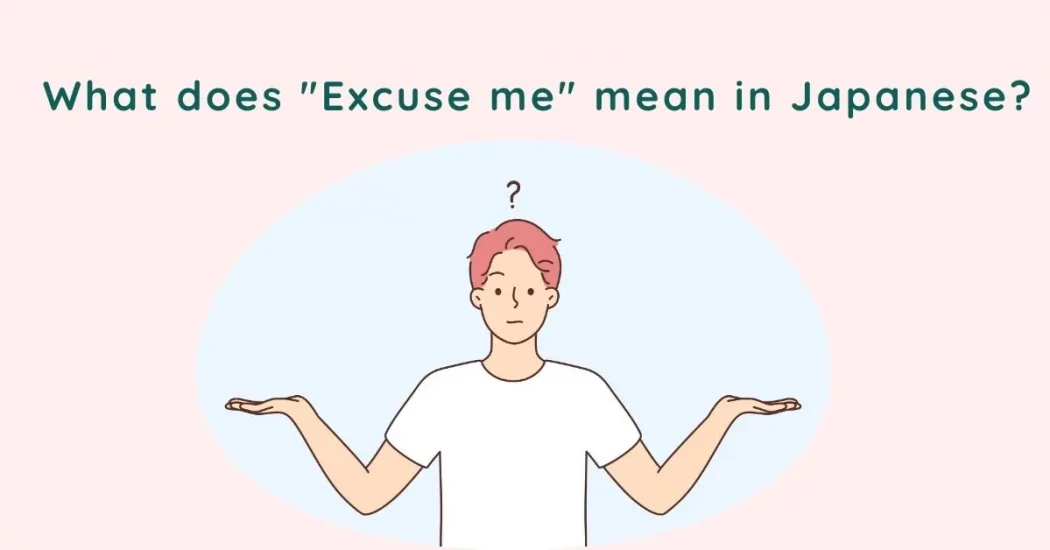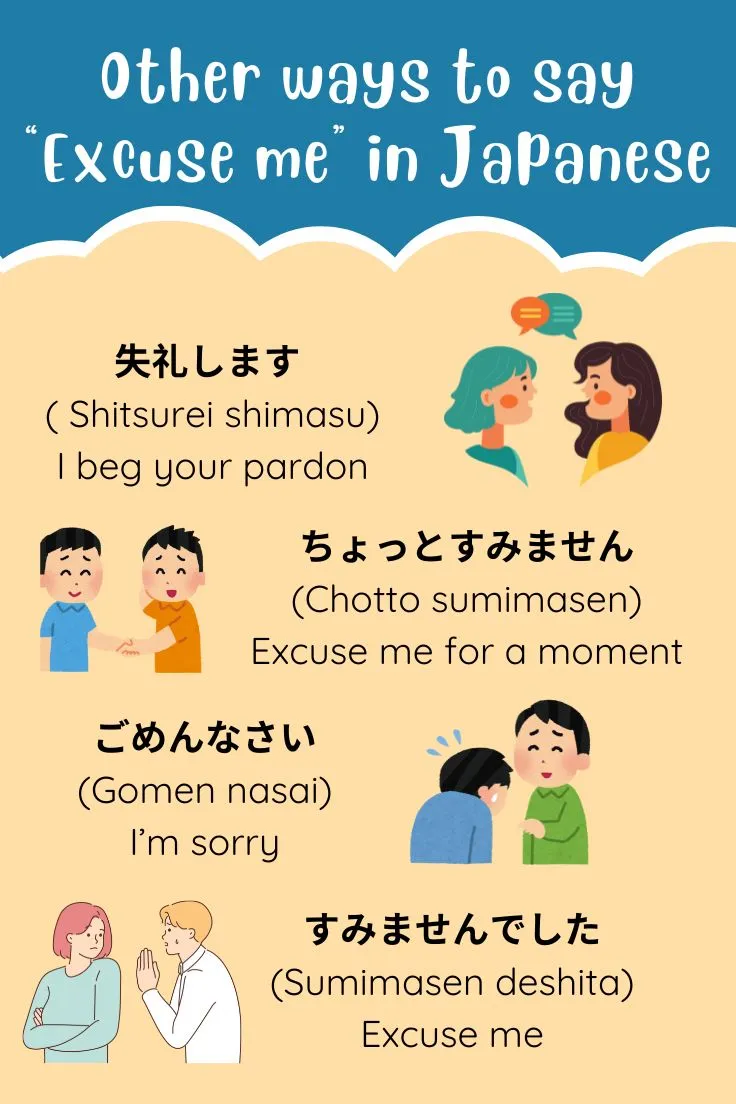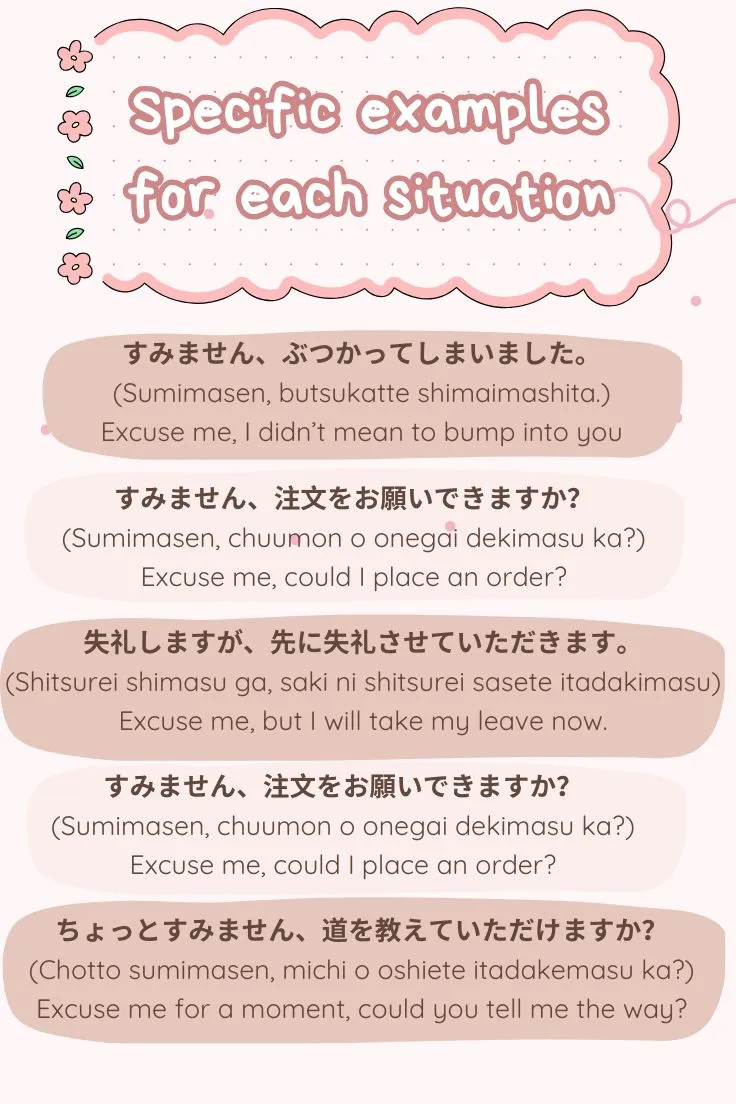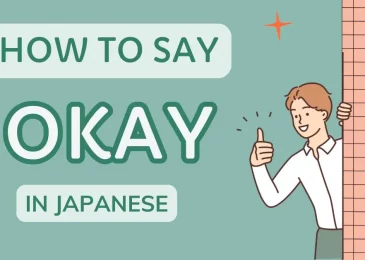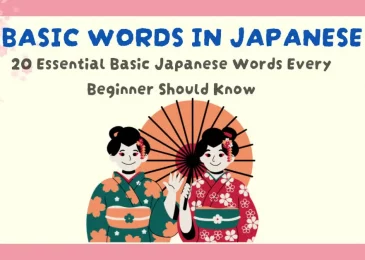In Japanese, expressing politeness is central to communication, making the phrase “excuse me” (sumimasen すみません) one of the first essentials to learn. Mastering this phrase and its variations helps navigate social situations smoothly, whether you’re apologizing, asking a question, or moving through a crowded space. This guide introduces key ways to say “excuse me” in Japanese, provides context on when to use each expression, and offers tips to effectively learn these phrases as part of your Japanese journey.
- What does “Excuse me” mean in Japanese?
- Other ways to say Excuse me in Japanese
- Specific examples for each situation – Excuse me in Japanese
- Why context matters when saying “Excuse me” in Japanese
- Tips for learning Japanese
- Conclusion
What does “Excuse me” mean in Japanese?
In Japanese, the phrase “excuse me” is most commonly translated as sumimasen (すみません). This versatile expression serves multiple purposes and is an essential part of polite conversation. Here are the key meanings and uses of sumimasen:
Apology: When you want to apologize for a minor inconvenience, such as bumping into someone or interrupting a conversation, sumimasen is the appropriate phrase. For example, if you accidentally bump into someone on the street, you would say:
- Example: すみません、ぶつかってしまいました。(Sumimasen, butsukatte shimaimashita.)
- Translation: “Excuse me, I didn’t mean to bump into you.”
Request for attention: When you need to get someone’s attention, such as calling a waiter at a restaurant, sumimasen is also used. You might say:
- Example: すみません、お水をください。(Sumimasen, omizu o kudasai.)
- Translation: “Excuse me, could I have some water, please?”
Expression of gratitude: In some contexts, sumimasen can also convey gratitude, especially if you are thanking someone for their help. It’s a way of acknowledging their kindness while also expressing a slight feeling of indebtedness.
This phrase is deeply ingrained in Japanese culture and is crucial for showing respect and politeness in daily interactions.
Other ways to say Excuse me in Japanese
While sumimasen is the most common way to say “excuse me,” there are several other phrases that you can use depending on the situation. Here are some alternatives:
失礼します (Shitsurei shimasu): This phrase translates to “I beg your pardon” and is often used in more formal situations, such as when entering or leaving a room or when interrupting someone.
- Example: 失礼します、少しお邪魔します。(Shitsurei shimasu, sukoshi ojama shimasu.)
- Translation: “Excuse me, I’m sorry to intrude for a moment.”
ちょっとすみません (Chotto sumimasen ): This means “excuse me for a moment” and can be used to grab someone’s attention briefly.
- Example: ちょっとすみません、今いいですか?(Chotto sumimasen, ima ii desu ka?)
- Translation: “Excuse me for a moment, is now a good time?”
ごめんなさい (Gomen nasai): This phrase means “I’m sorry” and while it is more of a direct apology than “excuse me,” it can be used in contexts where you want to express remorse for a more serious mistake.
- Example: ごめんなさい、遅れました。(Gomen nasai, okuremashita.)
- Translation: “I’m sorry for being late.”
すみませんでした (Sumimasen deshita): This phrase means “excuse me”, this is the past tense of sumimasen, used to apologize for something that has already happened.
- Example: すみませんでした、今すぐ行きます。(Sumimasen deshita, ima sugu ikimasu.)
- Translation: “I’m sorry, I will go right away.”
Specific examples for each situation – Excuse me in Japanese
Understanding when to use these expressions is crucial for effective communication. Here are some practical examples with specific scenarios where you might say “excuse me” in Japanese:
1. Scenario 1: You accidentally bump into someone on the street.
- Example: すみません、ぶつかってしまいました。(Sumimasen, butsukatte shimaimashita.)
- Translation: “Excuse me, I didn’t mean to bump into you.”
2. Scenario 2: You need to get a waiter’s attention in a restaurant.
- Example: すみません、注文をお願いできますか?(Sumimasen, chuumon o onegai dekimasu ka?)
- Translation: “Excuse me, could I place an order?”
3. Scenario 3: You want to interrupt a conversation to ask a question.
- Example: 失礼しますが、何を話しているのですか?(Shitsurei shimasu ga, nani o hanashite iru no desu ka?)
- Translation: “Excuse me, but what are you talking about?”
4. Scenario 4: You need to leave a meeting early.
- Example: 失礼しますが、先に失礼させていただきます。(Shitsurei shimasu ga, saki ni shitsurei sasete itadakimasu.)
- Translation: “Excuse me, but I will take my leave now.”
5. Scenario 5: You want to ask someone for directions.
- Example: ちょっとすみません、道を教えていただけますか?(Chotto sumimasen, michi o oshiete itadakemasu ka?)
- Translation: “Excuse me for a moment, could you tell me the way?”
These examples illustrate the flexibility of these phrases and how they can be used in everyday interactions.
Why context matters when saying “Excuse me” in Japanese
Understanding the context in which you use phrases like sumimasen or shitsurei shimasu is vital for effective communication. In Japanese culture, context can significantly alter the meaning and appropriateness of an expression. Here are some key points to consider:
- Formality: Japanese has varying levels of politeness, and the formality of your speech should match the context. For example, shitsurei shimasu is more formal than sumimasen and should be used in situations requiring greater respect, such as in business meetings or when speaking to elders.
- Relationship with the listener: Your familiarity with the person you are addressing also plays a role. If you’re speaking to someone you don’t know well or a superior, using formal expressions is more appropriate. Conversely, with friends or peers, you might opt for more casual alternatives.
- Cultural expectations: In Japanese culture, it’s customary to express humility and acknowledgment of others’ space and feelings. Understanding when to use “excuse me” helps foster respect and harmony in interactions. For instance, when entering a room or joining a group, it’s polite to say shitsurei shimasu to acknowledge your entry
Tips for learning Japanese
Learning how to use “excuse me” and other polite expressions is essential for anyone studying Japanese. Here are some tips to help you master these phrases effectively:
- Practice regularly: Consistent practice is key to becoming comfortable with using polite expressions. Try to incorporate them into your daily conversations, even if you’re speaking with yourself or practicing with language learning apps.
- Watch Japanese media: Engaging with Japanese films, anime, and dramas can help you hear these phrases used naturally. Pay attention to how characters use sumimasen or shitsurei shimasu in different contexts, and take note of the nuances in their usage.
- Role-playing scenarios: Create role-play situations with a language partner or tutor to practice using “excuse me” in various contexts. This interactive approach makes learning more enjoyable and helps reinforce your understanding of when and how to use these phrases.
- Utilize flashcards: Make flashcards with different expressions for “excuse me” and their contexts. Include example sentences and practice them regularly to enhance your recall.
- Embrace mistakes: Don’t be afraid to make mistakes. Learning a language involves trial and error, and using polite expressions correctly will come with time and practice. Be open to feedback from native speakers, as it will help you improve.
- Learn with apps:To master Japanese vocabulary, including polite expressions like “excuse me,” using language learning apps is highly effective.
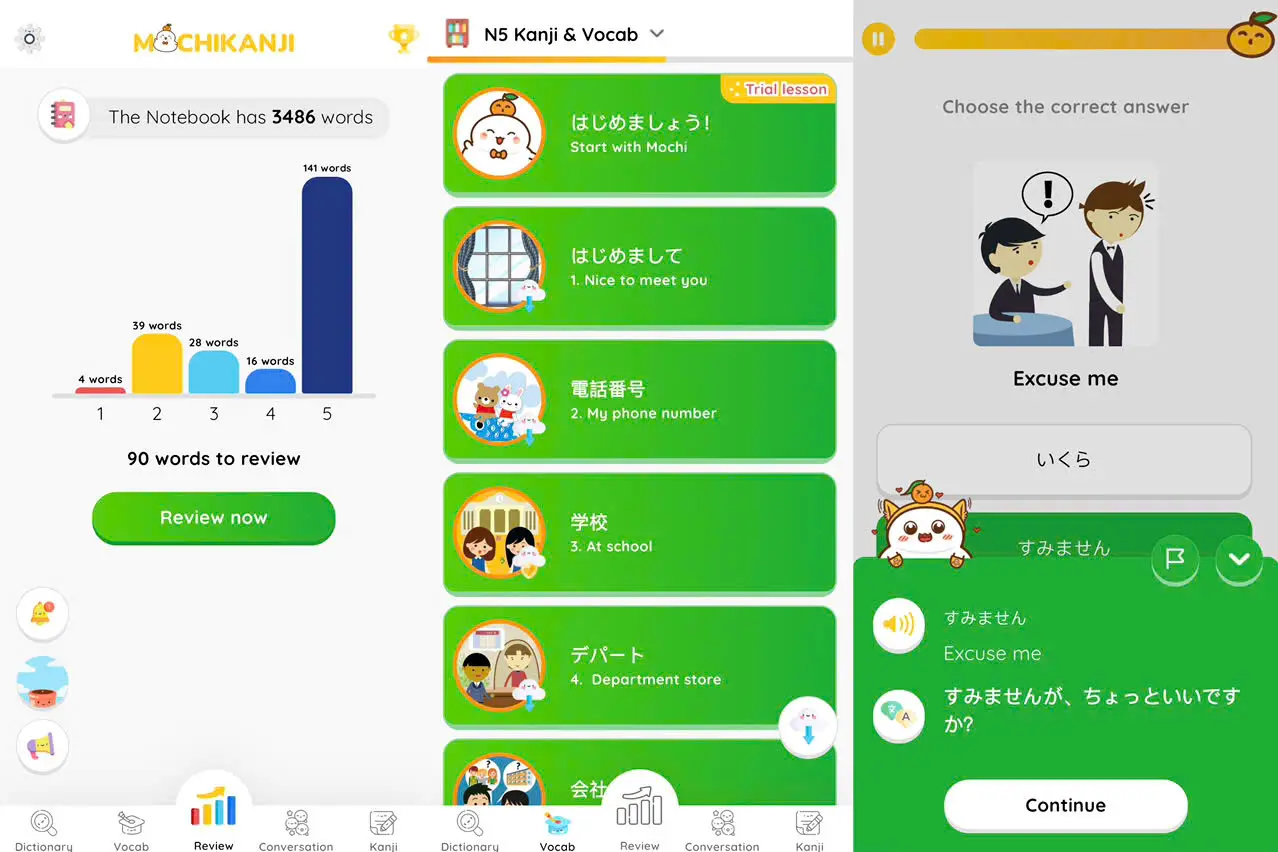
MochiKanji offers engaging flashcards that incorporate images and sounds, making vocabulary retention enjoyable. Its Golden Time feature employs a Spaced Repetition System (SRS), ensuring you review phrases like sumimasen at optimal intervals for better retention. By integrating MochiKanji into your study routine, you can efficiently enhance your understanding of Japanese while enjoying the learning process.
Conclusion
Saying “excuse me” in Japanese is more than just a phrase; it reflects the cultural emphasis on politeness and respect that characterizes Japanese communication. From the versatile sumimasen to the more formal shitsurei shimasu, each expression has its context and application.
Understanding the various ways to say “excuse me” allows you to navigate social situations with confidence and respect. Whether you’re apologizing, asking for attention, or interrupting a conversation, these phrases will help you build meaningful connections in Japan.

